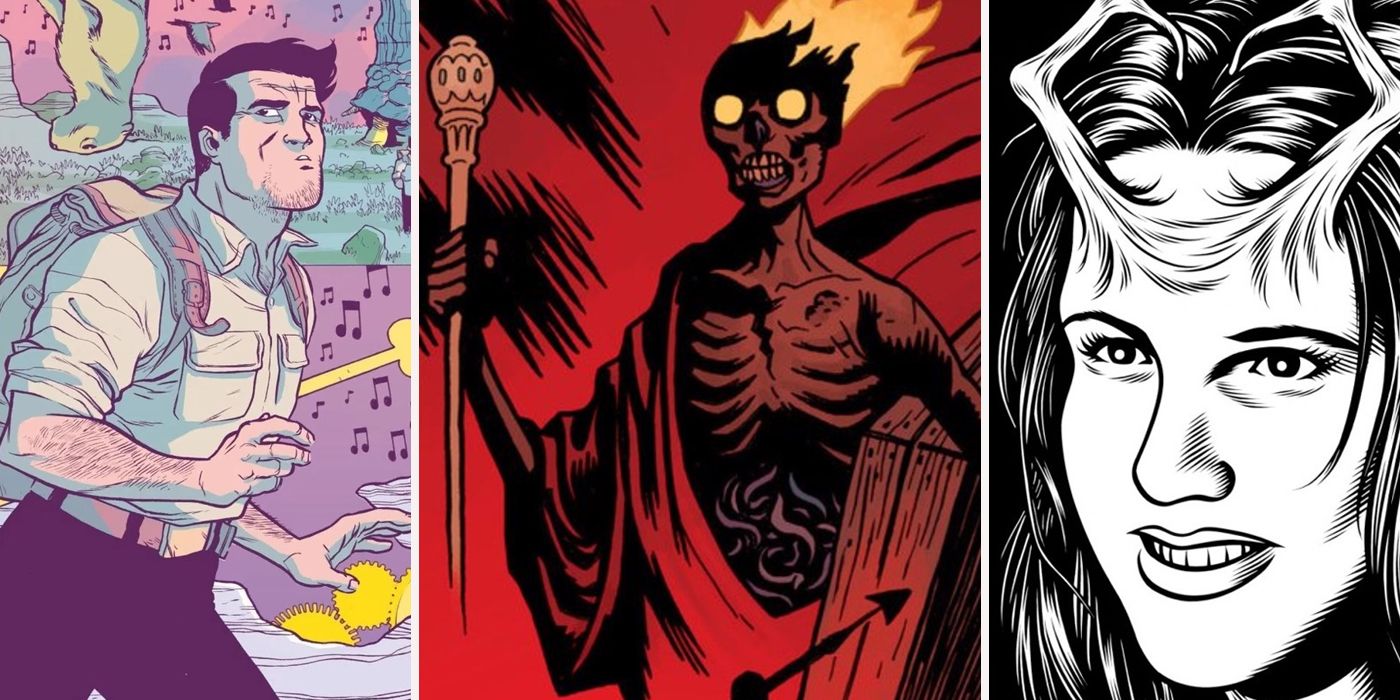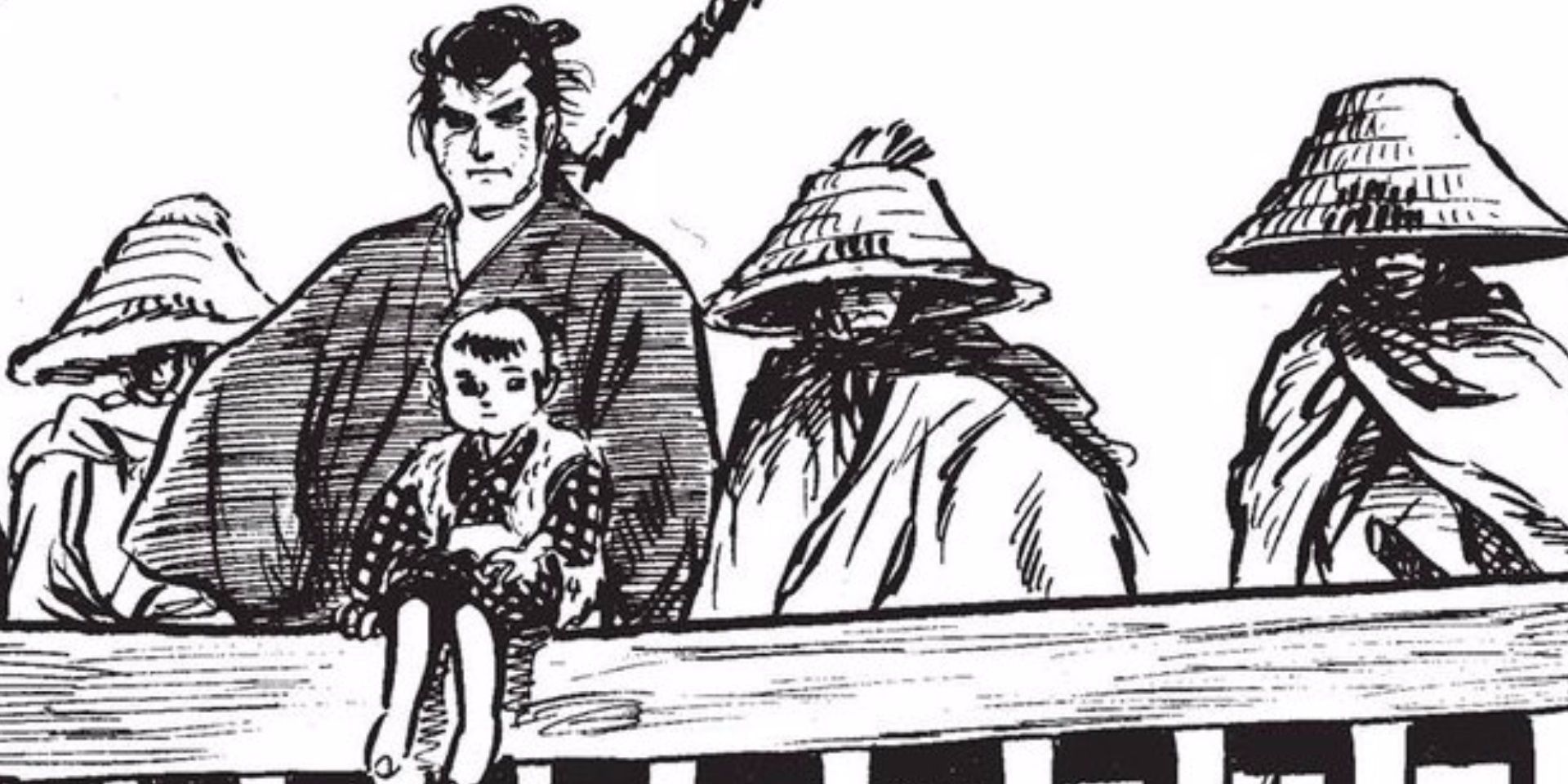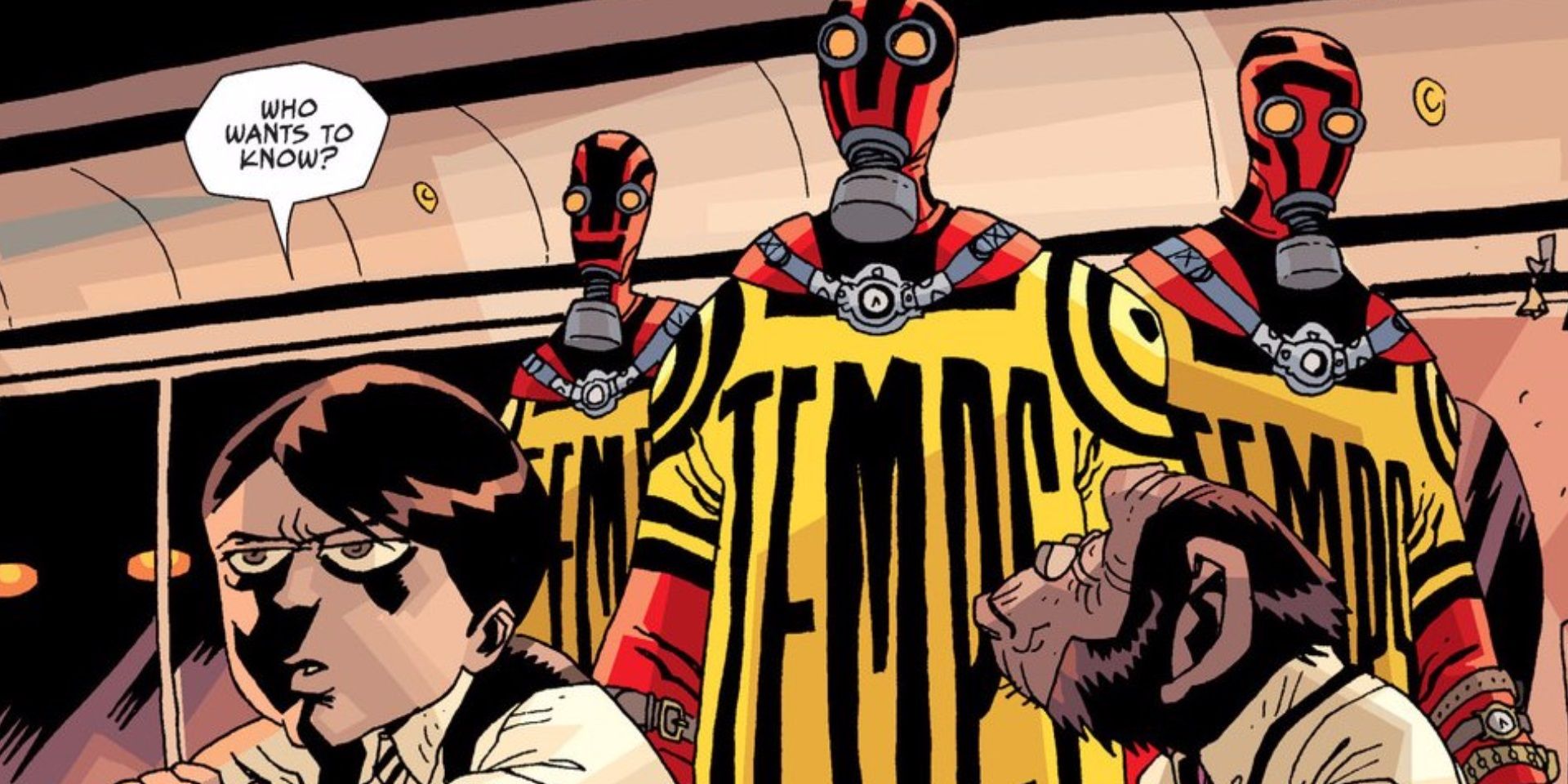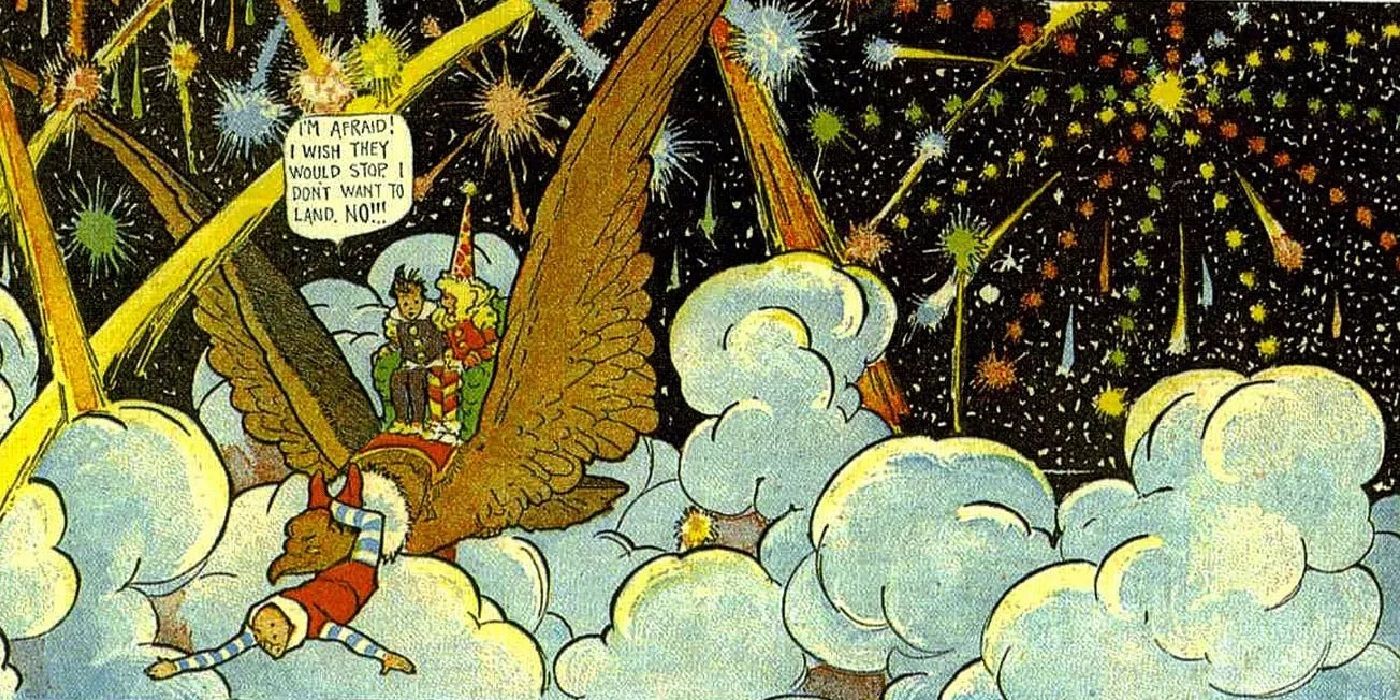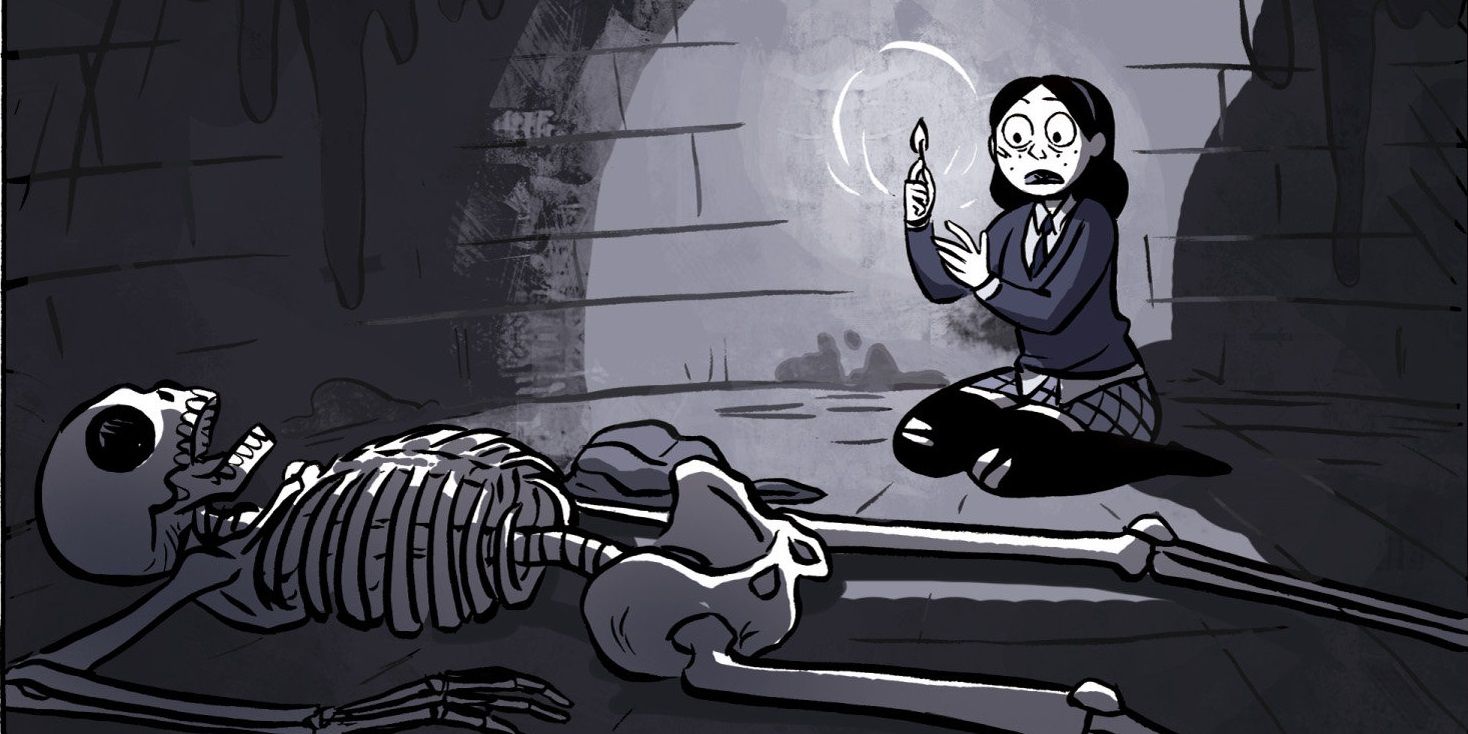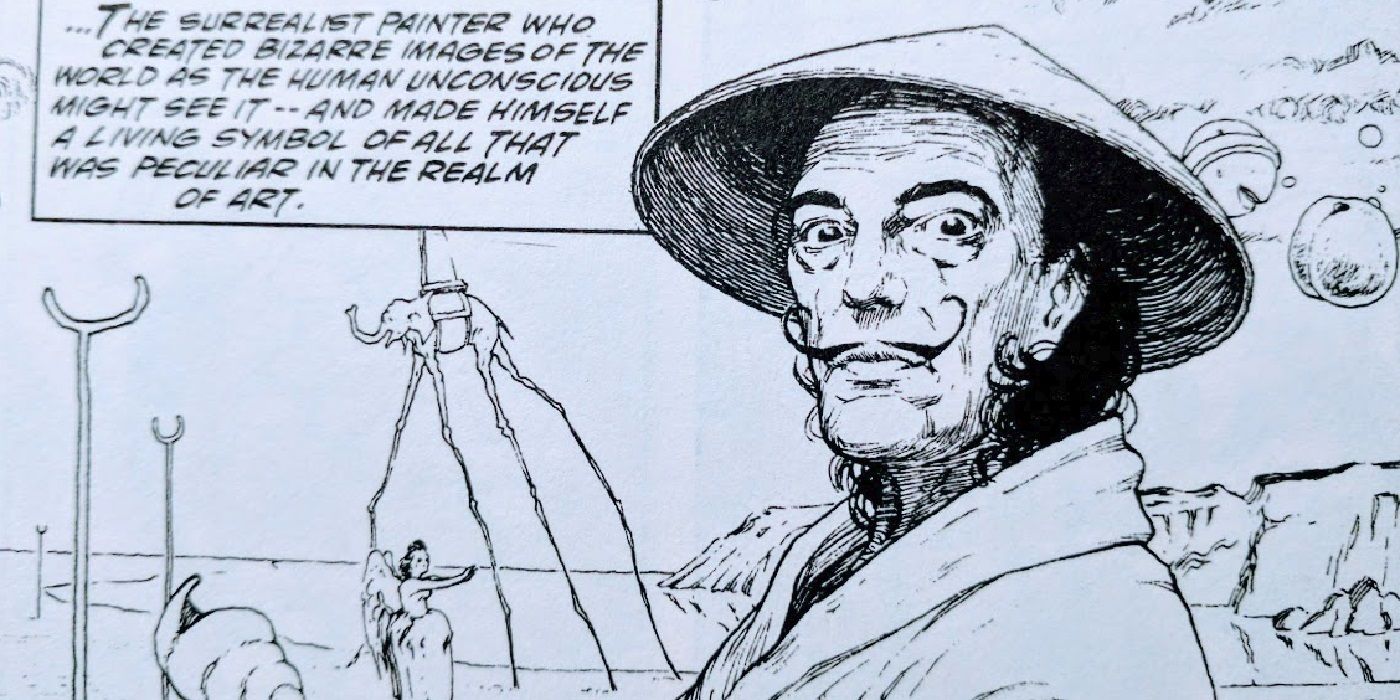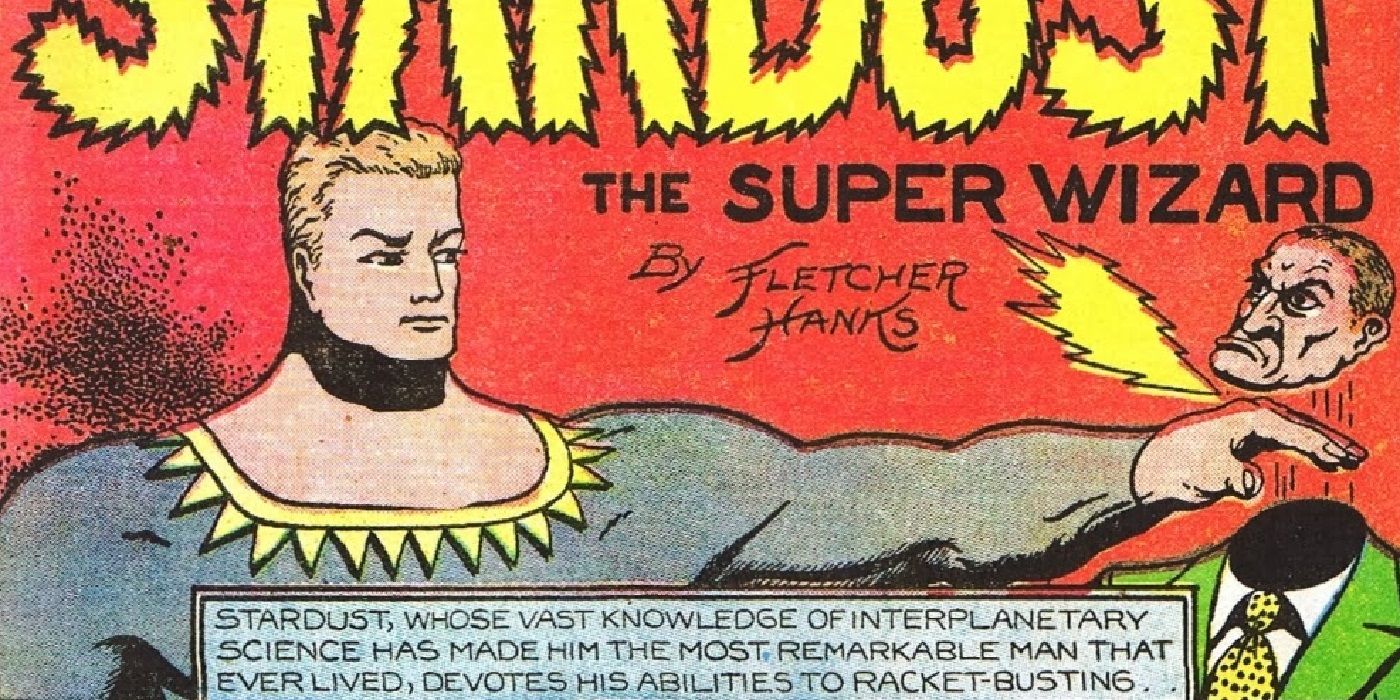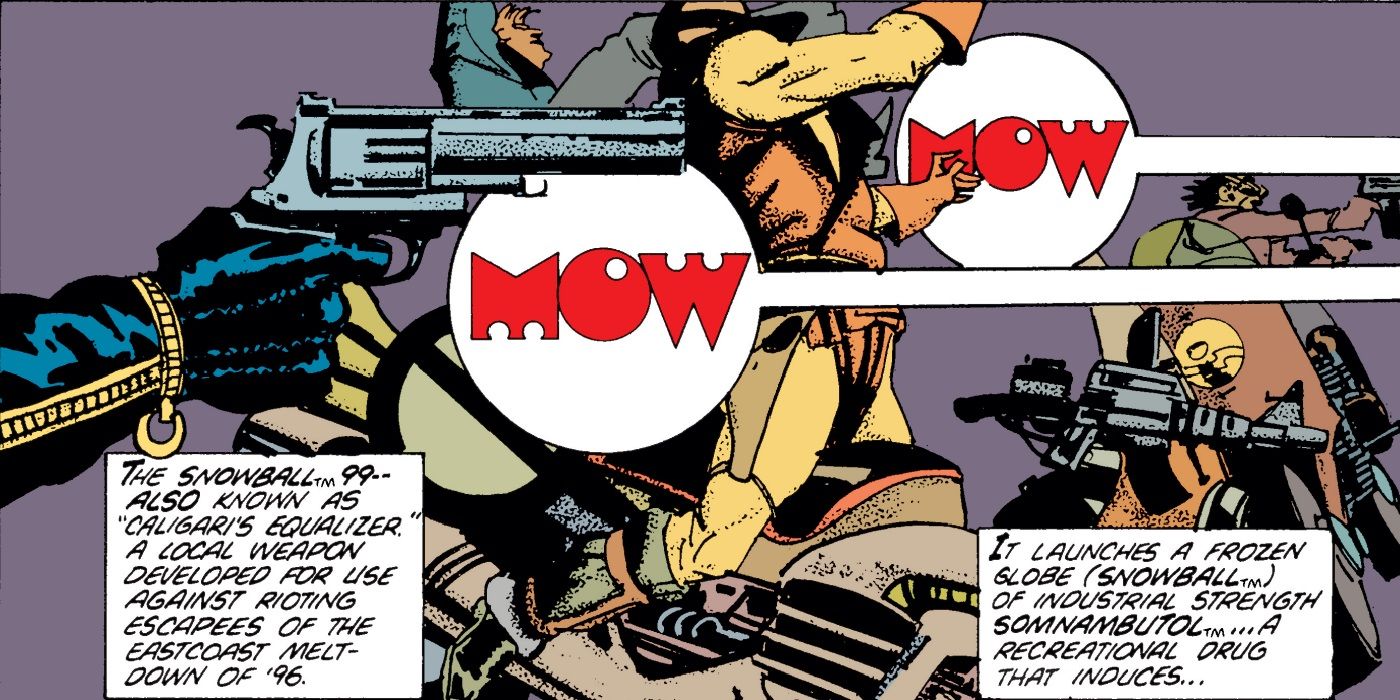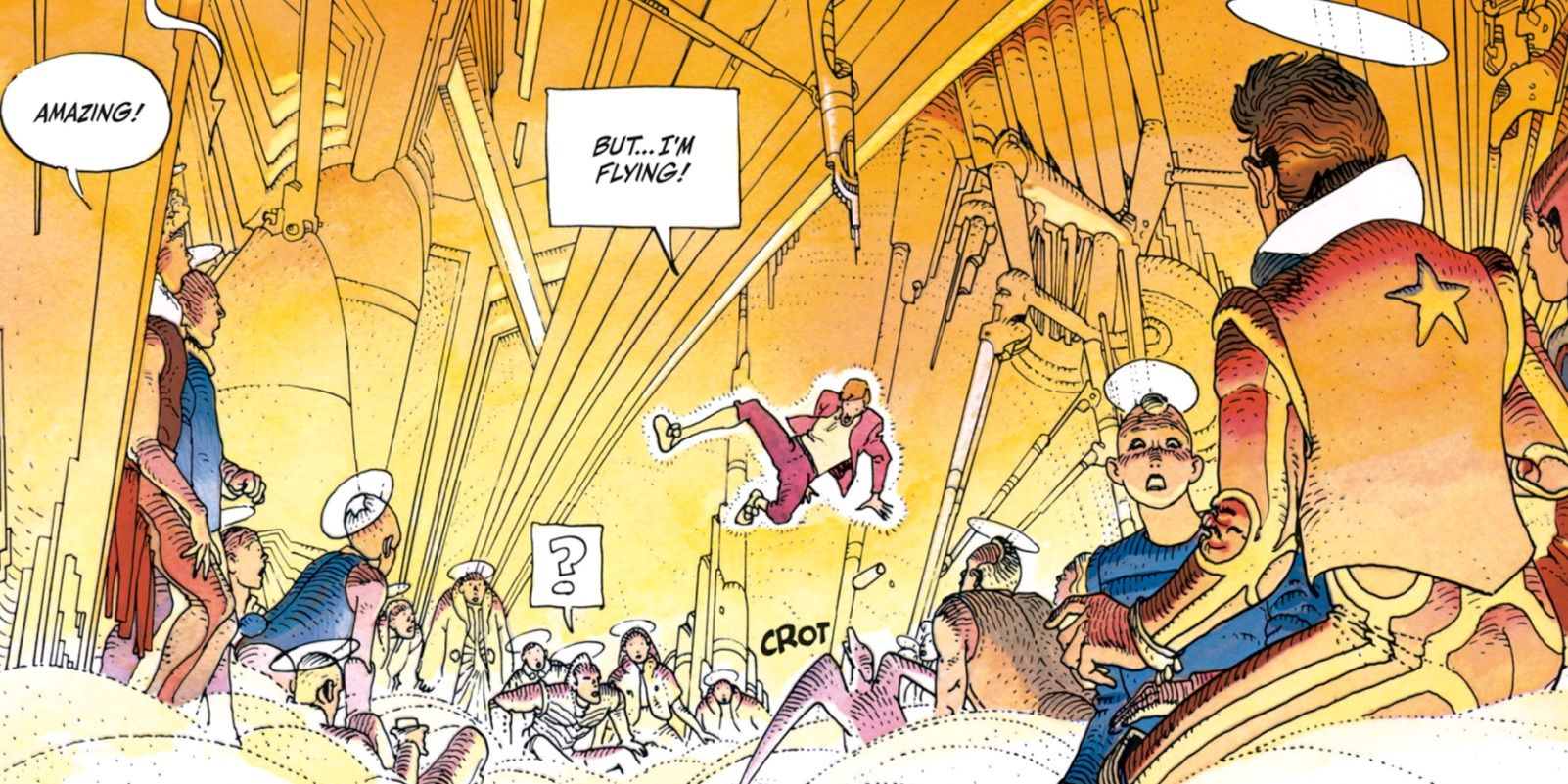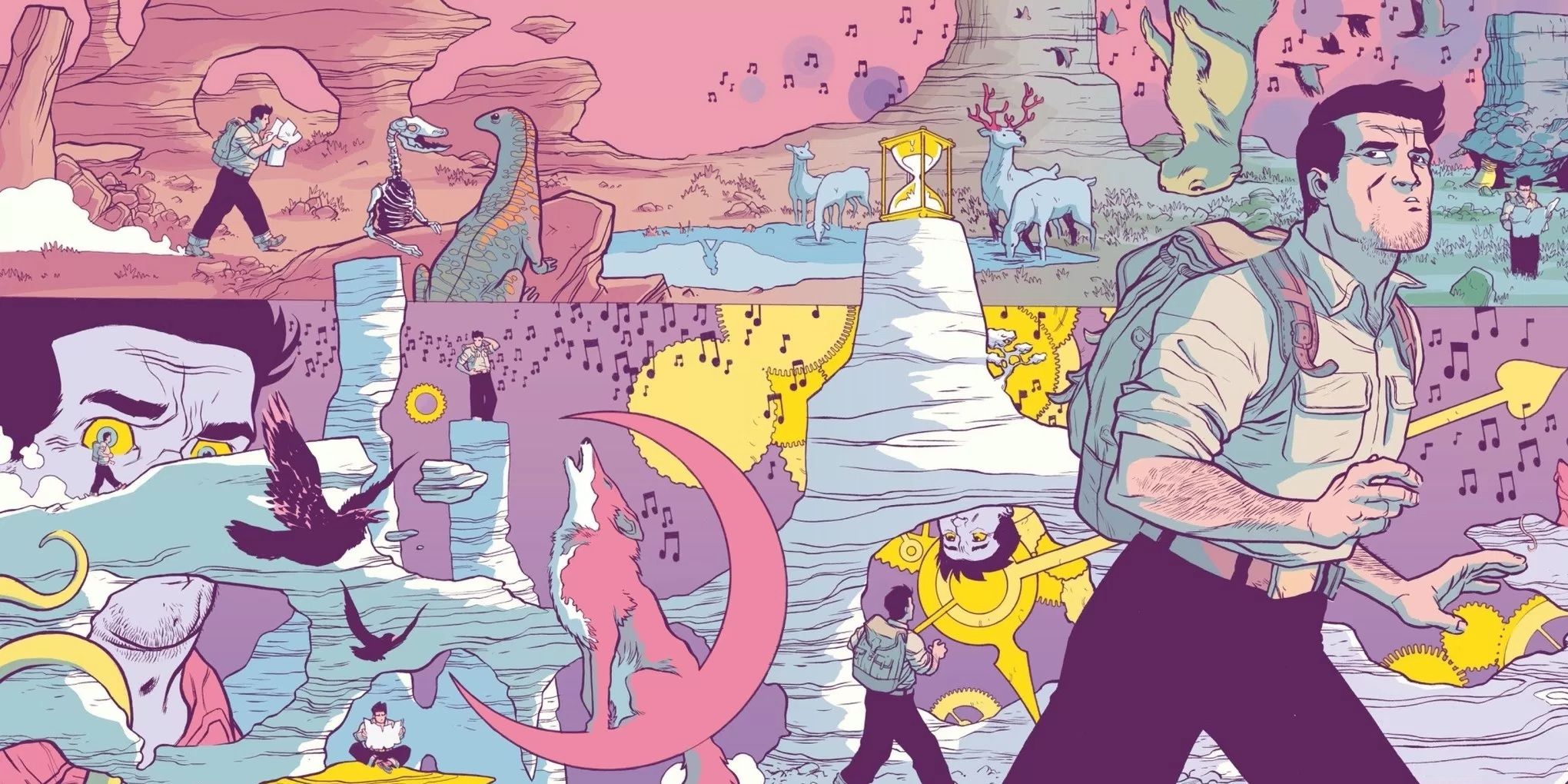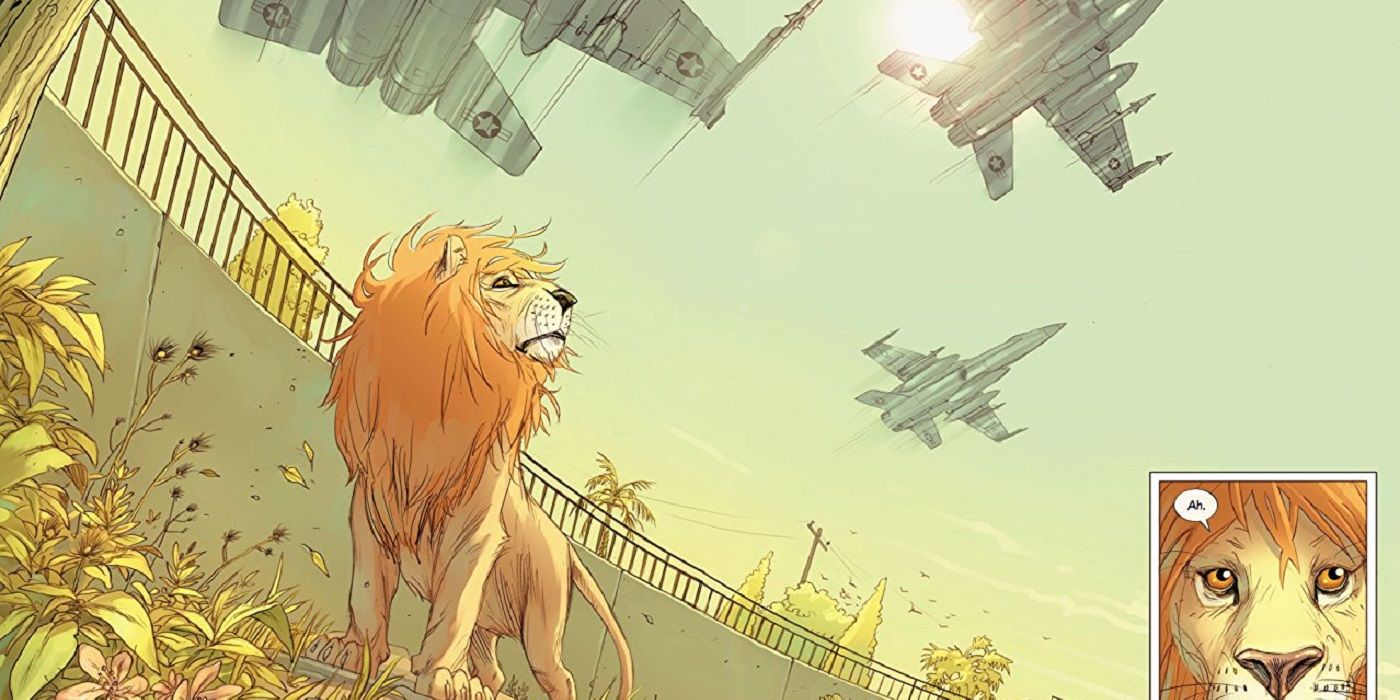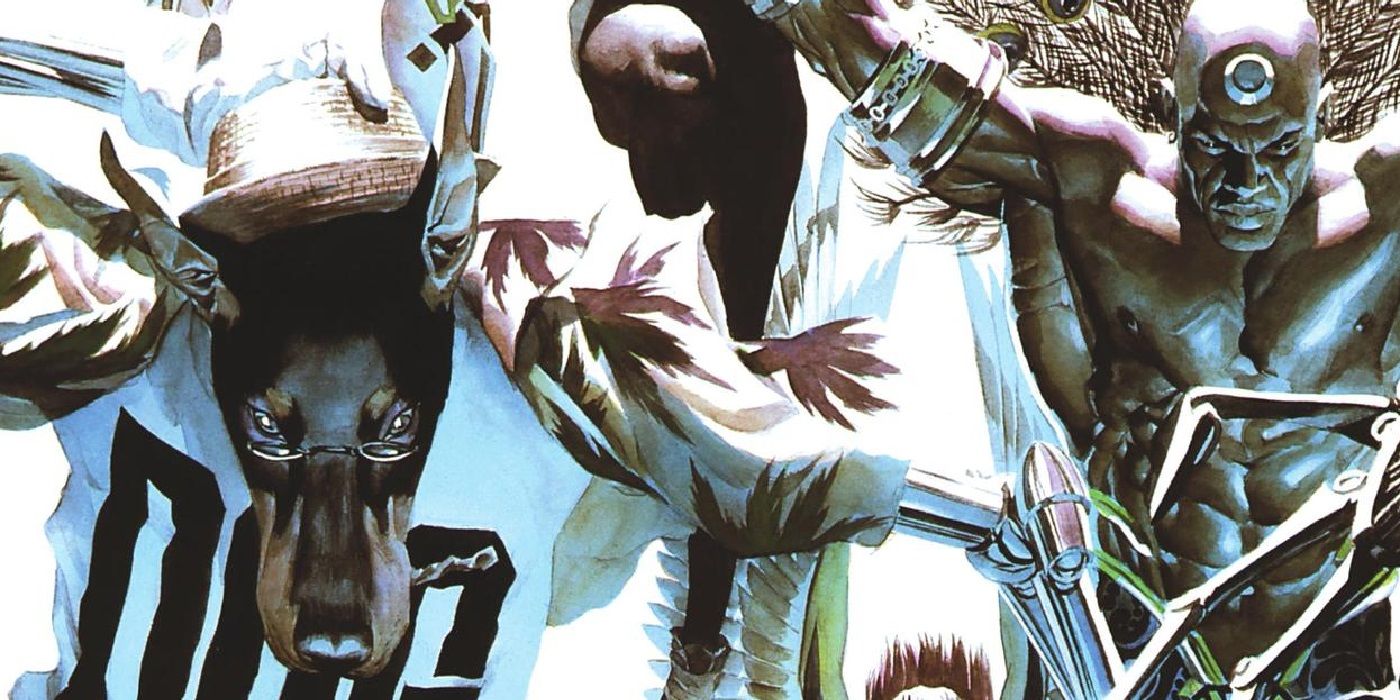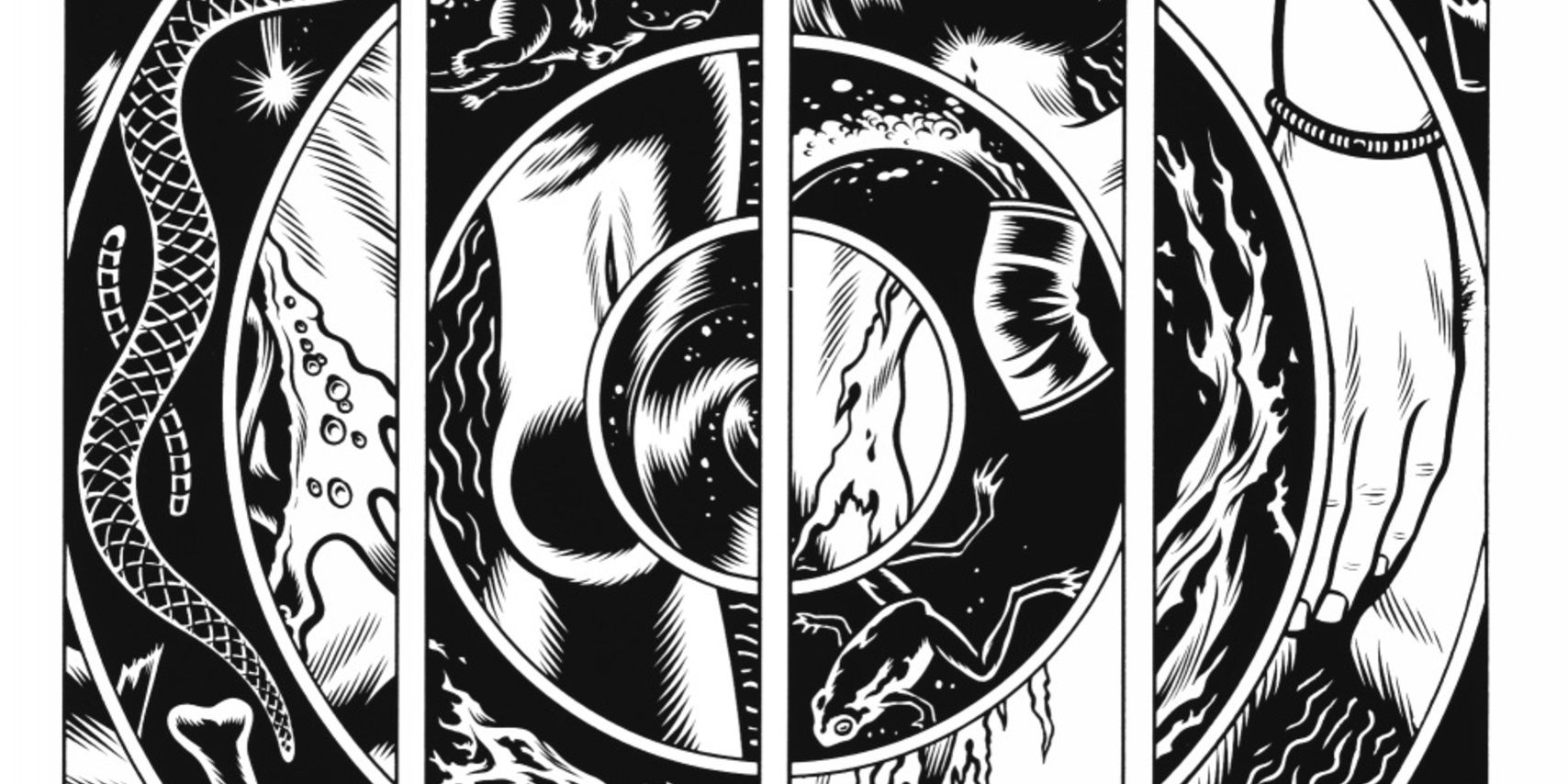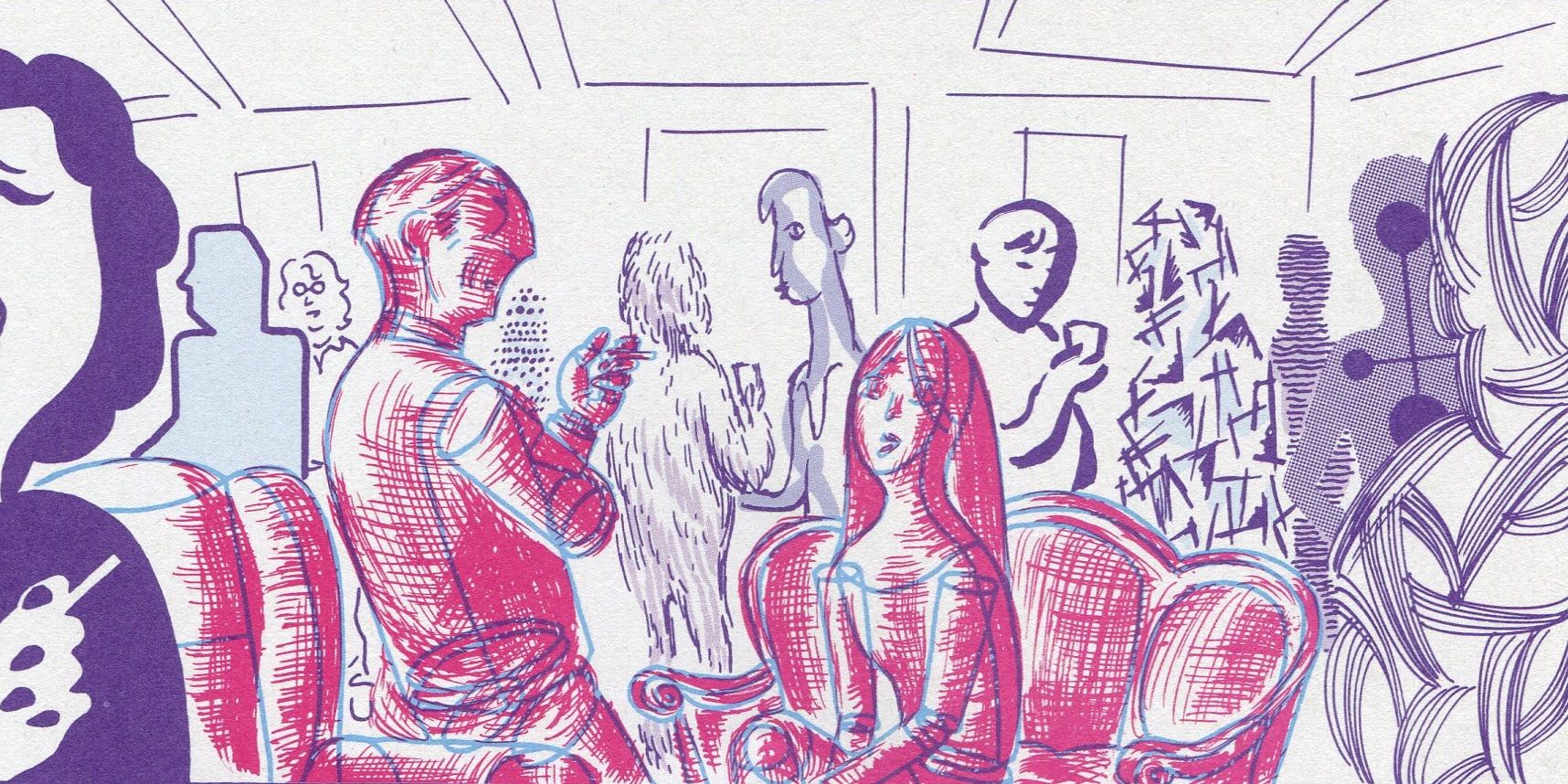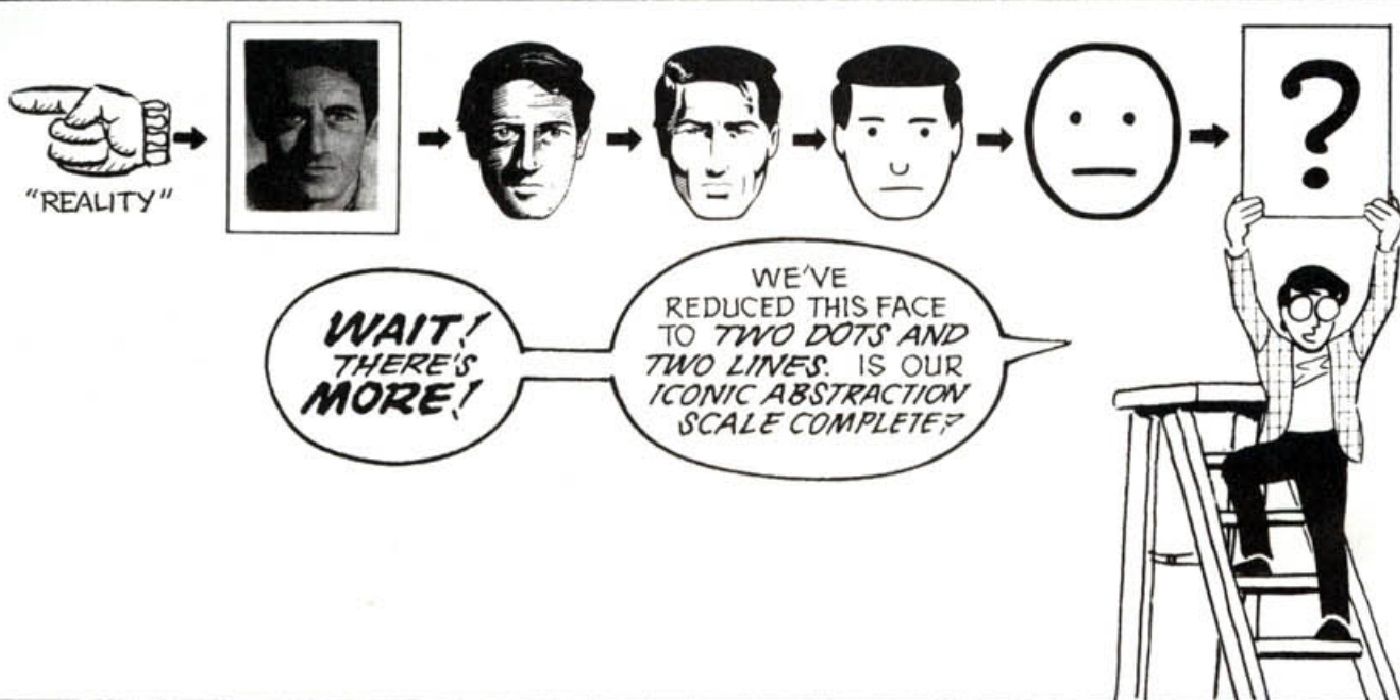Despite the way it might feel sometimes, there is more to comics than the Big 2 of Marvel and DC Comics. The sales charts are dominated utterly by those publishers and their superhero books. Image Comics has occasionally had a dog in the fight (usually that dog is named The Walking Dead), but otherwise you would never know that several other publishers exist and are putting out great work, that may or may not contain superheroes.
We have chosen to highlight some award-winning comics that you might not have heard of that don’t come exclusively from Marvel or DC. There are many prestigious awards given to comics. We have chosen to focus only on recipients of Eisner Awards or Harvey Awards, as they are probably the two largest in the industry.
Don’t get us wrong, we love superhero books and all the comics out there that are super popular. We are just pointing out that there is so much more out there. Some of it is funny, some of it is serious, some of it is just plain weird. Some superhero books, it can safely be said, will never be made into movies or shows. And more than a few of these have premises too off-the-beaten path to ever be considered for an adaptation.
Without further ado, here are 16 Award-Winning Comics You’ve Never Heard Of.
16. Lone Wolf and Cub
This one may easily be the best known of our list, but it’s just too cool to ignore. Originally running from 1970 to 1976, Lone Wolf and Cub was wildly popular in its home country of Japan. Written by Kazuo Koike and drawn by Goseki Kojima, the black-and-white book follows disgraced samurai Ogami Itto on his mission of vengeance as he travels with his young son, Daigoro.
Itto was once the official executioner of the shogun but, after a botched power-grab by a rival clan, Itto's wife was killed and his station revoked. Itto takes to the road with his young boy, who he wheels around in a weaponized baby cart. He works as an assassin and plots the downfall of the treacherous Yagyu clan. Itto is a swordsman without rival, but is also a strict adherent to the bushido code of honor.
The book, both beyond badass and exceedingly violent, has been turned into six great films in Japan and adapted into two television series. The book won an Eisner in 2001 for Best U.S. Edition of Foreign Material after Dark Horse Comics re-released the book, and won four Harveys also.
15. The Umbrella Academy
Lead singer of the popular 2000s band My Chemical Romance, Gerard Way, was the main mind behind the fantastically creative The Umbrella Academy. An early comic attempt by Way, the series (and its mini-series The Umbrella Academy: Apocalypse Suite) were drawn by Brazilian comic powerhouse Gabriel Ba. The Umbrella Academy has won a total of three Harveys (Best New Series, Best Colorist, and Best Artist or Penciller) and five Eisners (three for Best Colorist and two for Best Cover Artist). Apocalypse Suite also won an Eisner in 2008 for Best Limited Series.
The story follows a group of super-powered children who were adopted by an alien disguised as a monocled businessman. The children work together to fight threats but, as a family, are highly dysfunctional. In the wake of their patron’s death, they must come together to take on one of their own.
The characters, from Spaceboy the super-strong man whose head was sewn to the body of a Martian gorilla to Number Five the time-jumping assassin who never appears to age after having turned 10, are anything but typical spandex faire.
14. Winsor McCay’s Complete Little Nemo
Winsor McCay was a celebrity cartoonist and animation pioneer, responsible for the cartoon Gertie the Dinosaur in 1914. His comics appeared in the newspapers of the time in little strips. In 2015, iconic coffee table book publisher Taschen released the complete collection of his Little Nemo strips, and won the Eisner for Best Archival Collection/Project. Several re-releases of McCay’s Nemo comics have won multiple Eisners and Harveys.
Little Nemo in Slumberland (later renamed In the Land of Wonderful Dreams) was a stunningly beautiful cartoon done in an art nouveau style. The strips focused on Nemo, a young boy, who had wild adventure in his sleep. The last panel always included him waking up from his dreams. The dreams had a heavily surreal element to them, but would also feature recurring characters and an overarching story.
The comic ran from 1905 to 1926, but the artwork and imagination are just as stunning now as during their original publication. An animated film and a video game for the NES were among the many adaptations. Nemo and his adventures in Slumberland have been revived for a modern comic book, which has also gone on to be an award-winner.
13. Anya's Ghost
Written by Vera Brosgol, who has won a Caldecott Award for children’s literature and works for LAIKA Entertainment as a storyboard artist, Anya’s Ghost is a book aimed at young adult readers, but it is so engrossing and dark that it is a fantastic read for adults as well. The book won an Eisner for Best Publication For Young Adults (ages 12-17) and a Harvey for Best Original Graphic Publication For Younger Readers in 2012.
The story follows Anya, a young girl attending a private school. Anya falls down a well and befriends a ghost named Emily (who claims to have died after falling down that same well). Emily follows Anya after Anya is rescued, and the two become fast friends. All is not what it seems with Emily, however, and things take more than a couple dark turns as the story progresses.
The art is simple and cartoonish, but is done in such a way that conveys incredible emotion-- making the book universal and touching.
12. The Big Book of Weirdos
The Big Book of Weirdos was the second of 17 different anthology comics in the series (and all of them are worth reading). Many of them went on to win awards, and this particular entry won as part of the 1996 Best Editor Award for Bronwyn Taggart, who also edited The Big Book of Conspiracies and two other books that same year. Bronwyn shared the award that year with Stuart Moore who edited Swamp Thing, Preacher, and The Invisibles.
The book was written by Carl Posey, and each story was illustrated by one of 67 different artists. Each story had a very distinct art style-- ranging from simplistic and cartoonish to hyper-detailed. This particular entry focuses on eccentric public figures. The book is broken into chapters (focused on various artists, writers, dictators, inventors, etc.) and each story is just a couple pages. While a fascinating way of reading up on a number of people, it is definitely for mature audiences only.
11. Baltimore: The Plague Ships
While Mike Mignola is best known for his work creating, writing, and drawing Hellboy, he has amassed a great deal of other, powerful work as well. One of those creations was Henry Baltimore, a man of nobility whose life is completely changed after surviving a vampire attack during World War I. Cursed by the vampire lord he fought off, the mutilated Baltimore sets out on a mission of vengeance for all that the vampire had taken from him.
Baltimore: The Plague Ships won the 2011 Eisner for Best Cover Artist for the amazing and haunting covers done by series writer, Mike Mignola, and artist, Ben Stenbeck. In The Plague Ships, Baltimore finds himself fighting off undead sailors who had risen due to a strange fungus. Baltimore is an interesting character, and the grim post-Great War setting feels fresh even today. While a planned movie by David Goyer fell through, a Baltimore film would be an instant hit.
10. I Shall Destroy All The Civilized Planets!
I Shall Destroy All the Civilized Planets! won the 2008 Eisner for Best Archival Collection/Project, and was published by Fantagraphics. The book collected the stories of Fletcher Hanks, who wrote, drew, and colored all of his own comics while working for Will Eisner (the comics legend whose name is lent to the prestigious award). Fletcher Hanks himself was an odd story: he worked in comics for just two years and produced just 51 stories, he was an alcoholic, and he was later found dead, frozen on a park bench while homeless and poor.
As bizarre and tragic as Hanks’ life story was, it does not hold a candle to the sheer absurdity of his comics. The writing was bad, even for the time (in fact, the title of the collection is a line taken from one of his stories), the characters were absurd, the action was shockingly violent, and the art style was like no other. His most famous creations were Fantomah, the Mystery Woman of the Jungle, and Stardust, the Super Wizard. Both of them are featured prominently in this collection.
9. American Flagg!
Howard Chaykin is a living legend in comics, still working on projects to this day, such as the current art for Matt Fraction’s Satellite Sam. One of his greatest comics to-date is American Flagg! which ran for 50 issues starting in 1983. The book garnered a Harvey in 1988 for Best Letterer for Ken Bruzenak (whose art is depicted in the header image of this entry).
The book is a satire of the way politics, entertainment, consumerism, and our culture of violence and sex seemed to be heading in the 1980s (and continues to trend toward today). The book takes place in the intermediate future, and features the U.S. government having relocated to Mars and working hand-in-hand with a mega-corporation. The main character, Reuben Flagg, was a television star who went into law enforcement.
Like all dystopian science fiction, the premises, while pretty absurd and far-fetched, don’t seem entirely dismissible as a possibility. The resultant book is full of great action, insight, humor, political and corporate intrigue, and bedroom escapades.
8. The Incal
Surrealist filmmaking icon Alejandro Jodorowsky (of The Holy Mountain) is a man of many talents. Among his various pursuits, Jodorowsky has an extensive back catalog of comics that he’s written. In 1988, his The Incal won a Harvey for Best American Edition of Foreign Material. The works that made up the collection were originally published in Metal Hurlant (or Heavy Metal, the cult sci-fi comic magazine imported over from France) beginning in 1981. Jodorowsky teamed with French artist Moebius (Jean Giraud), whose work has shaped the look of science fiction and comics for all-time.
The Incal tells the story of a know-it-all private detective named John DiFool in the future. DiFool stumbles upon The Incal, an alien crystal with incredible powers, which sets him on a collision course with a number of different groups and aliens that want the crystal for themselves. The world of The Incal is a very bizarre dystopia, where technology and religion have fused together and corruption is rampant. Beautifully drawn and deeply imaginative, The Incal wound up serving as the starting point for a whole universe of stories by Jodorowsky in series such as Metabarons and The Technopriests.
7. Jim Henson's Tale of Sand
In addition to creating the Muppets and being the hand behind Kermit the Frog as well as several other beloved characters, Jim Henson was a talented experimental filmmaker. Henson wrote Tale of Sand as a screenplay alongside fellow Muppeteer, Jerry Juhl in the ‘60s and ‘70s. The story was pretty out there, and the film was never made. Following the deaths of both Henson and Juhl, the script was uncovered and adapted to comic form by artist Ramon Perez, who used the original, mostly wordless script.
The book is a bit hard to describe. It combines surrealism, stream-of-consciousness associations, absurdism, and good old-fashioned humor to create an epic adventure. At the heart of it, the book is a chase through the desert-- the hero, Mac, is being pursued by a mysterious (and maybe supernatural) man named Patch. The book cleaned up at both the Harveys and the Eisners in 2012: winning Best Single Issue or Story and Best Graphic Album of Original Work at the Harveys and Best Publication Design, Best Artist, and Best Graphic Album (New) at the Eisners.
6. Pride of Baghdad
Best-known these days for creating and writing Saga, Brian K. Vaughan has an incredible and varied comic portfolio, including the awesome Y:The Last Man and soon-to-be-adapted-to-television The Runaways. One book of Vaughn’s that often gets overlooked is a graphic novel he worked on with artist Niko Henrichon, Pride of Baghdad. The book won an Eisner for Best Letterer and a Harvey for Best Graphic Album of Original Work in 2007.
The book is fiction, but is based on a real event. In 2003, after the U.S. bombed Iraq, a pride of African lions escaped the Baghdad Zoo to roam free. The story comes from the point of view of the lions, and serves as an allegory for the war itself. The result is a modern classic. The book has something for everyone and should be considered a required reading. Heartfelt and touching, the art of comics doesn’t get much better than Pride of Baghdad.
5. Top 10
If you have any familiarity with comics beyond The Avengers and Batman, you’re probably familiar with the work of Alan Moore (whether you recognize his name or not). Moore is responsible for several books which were adapted into movies.
Moore wrote Watchmen, V For Vendetta, From Hell, and The League of Extraordinary Gentlemen (soon to be a new movie that will hopefully do the book justice). One property that has yet to be adapted is, hands-down, his most fun book: Top 10. The publication won a whopping seven Eisners during its two-year, 12-issue run, with one of its spin-off books, Top 10: The Forty-Niners winning three more.
Top 10 details the police department in the city of Neopolis. Neopolis was created for all super-powered beings following World War II-- so everybody has powers and a super-name (and usually a costume), from the cab drivers to the pickpockets to the short-order cooks. The world of Neopolis is introduced to us by new recruit Robyn "Toybox" Slinger, a legacy hero who controls her father's weaponized toys. The characters are creative, the action is plentiful, the humor is high, and the drama is real. Top 10 belongs in everyone’s library.
4. Buddha
Osamu Tezuka is probably the most important name in 20th century art and culture that you might not know. The father of manga, and creator of Astro Boy, Tezuka is a universally revered icon in Japan. In 1972, he began on a journey to chronicle the life of the founder of Buddhism, Gautama Buddha. The resultant manga stretched on for 11 years. It was collected into eight volumes in the United States in the 2000s, and won back-to-back Eisners and Harveys for U.S. Editions of Foreign Comics.
Tezuka, who both wrote and drew the black-and-white manga, has an easily-identifiable cartoonish style. The simplicity and bubbliness of his drawing belies the utter emotional complexity of this work. The story of the Buddha is fascinating, and one of the greatest stories that can ever be told. The Buddha books have a tremendous amount of humor, action, drama, and philosophy-- all of which can be enjoyed by Buddhists and non-Buddhists alike. Whether or not you are religious, this epic story is an absolute must-read, and makes for an excellent introduction to what manga is capable of.
3. Black Hole
Black Hole is a singular work written and drawn by Charles Burns. Burns’ work is instantly identifiable by a prevailing use of black that brings to mind more of a woodcut art style than a comic one. Burns’ masterpiece, Black Hole won him seven Harveys for Best Inker during the 10 years it was published. The collected version won both an Eisner and a Harvey for being the best graphic novel reprint. Black Hole also won a Harvey for Best Cover Artists in 2004.
The book is a coming-of-age story with a very dark twist. Black Hole takes place in the ‘70s in Seattle, and focuses on a group of high school kids. What is different about the Seattle of Black Hole is that there is a sexually transmitted infection being spread amongst teens that causes severe mutations-- each of them varying from person to person. Because of “The Bug,” there is a heavy emphasis on sex and its risks.
Haunting imagery, a unique premise, and really sharp writing combine in Black Hole to make it one of the most iconic comics of all-time.
2. Asterios Polyp
Winner of three Harveys (Best Graphic Album of Original Work, Best Single Issue or Story, Best Letterer) and three Eisners (Best Graphic Album: New, Best Writer/Artist, Best Letterer) in 2010, Asterios Polyp is a modern classic by any standard. The book was written and drawn by David Mazzucchelli, who had a run in the mid-’80s drawing Daredevil and was the artist behind Batman: Year One, amongst many other credits.
Asterios Polyp, the main character of the book, is a professor and architect with an inordinately high opinion of himself. The book details his journey of falling in love, the dissolution of his relationship, his revelation, his crash to rockbottom, and his adventure of starting over in a touching and awe-inspiring artistic way. The book is rendered in only four colors, and Mazzucchelli uses his drawing, his abstraction of the characters and setting, and the color as storytelling instruments, which carry a weight that goes beyond mere words. Truly a work of art, there is not a single panel of this book that couldn’t be taken out and put on the wall of a museum.
1. Understanding Comics
If you’re thinking, “Why would I care about a comic that is a textbook about how to read comics,” we understand where you’re coming from. You’ll have to trust us, though. This book is nothing short of remarkable. Any education that doesn’t include this book (either in school or on your own) is an incomplete one. In 1994, this book won an Eisner for Best Comics-Related Book and won three Harveys (Best Writer, Best Graphic Album of Original Work, and Best Biographical, Historical, or Journalistic Presentation).
Writer Scott McCloud, whose latest work, The Sculptor, is beautiful and tremendously sad, takes the reader on a journey across what makes comics tick. Along the way we get history lessons, information about different ways to show the passage of time, the differences between manga and comic books, lessons on the psychology of a reader, and so much more. It is a living dictionary and encyclopedia both on comics, and it is impossible to convey just how interesting and entertaining McCloud makes the presentation. This is the ultimate weapon to use against anyone who says they don’t like comics or believes that comics are only for children.
---
Do you have any suggestions of award-winning comics that weren't mentioned in the list? Let us know in the comments!

